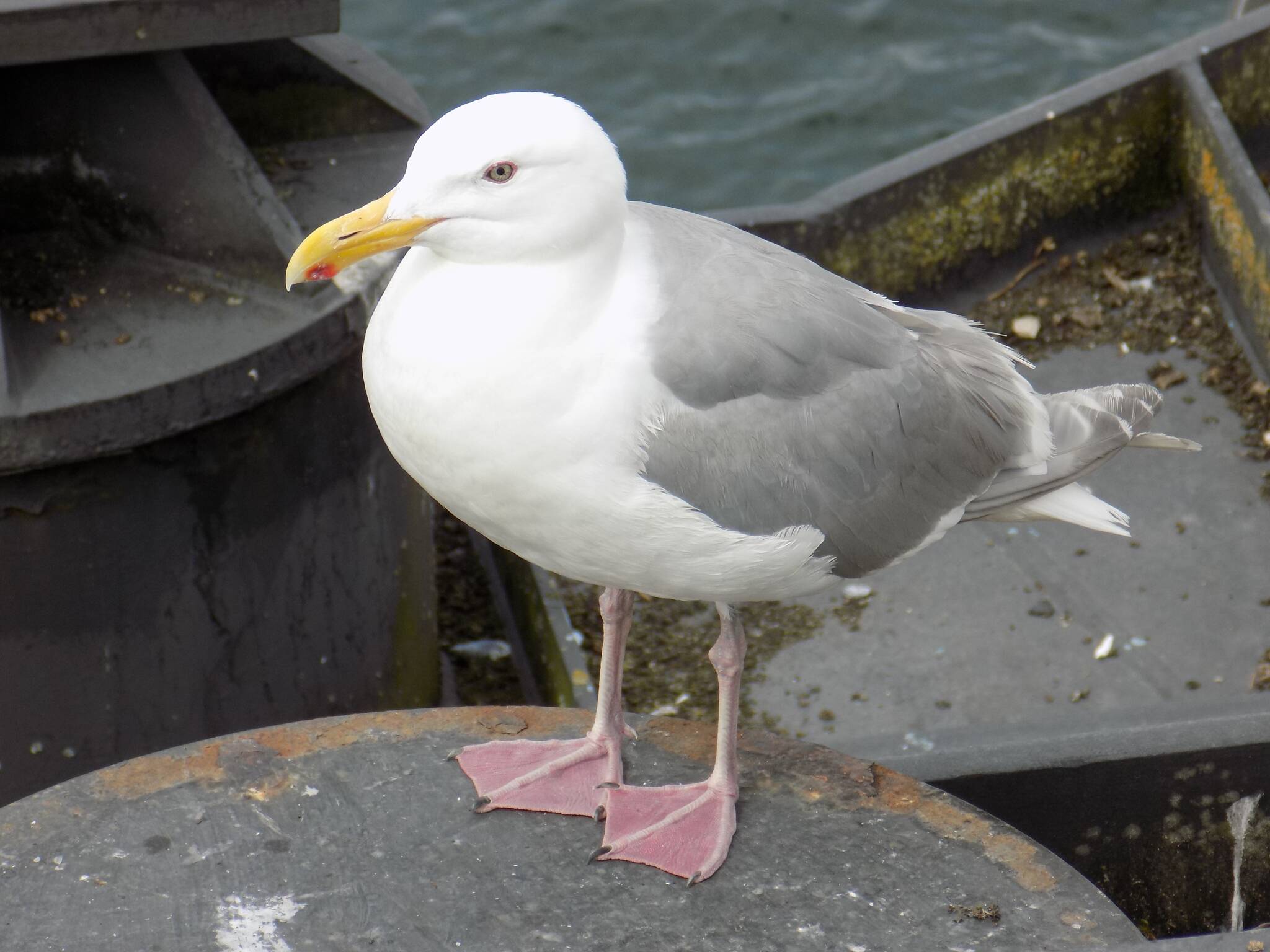by Russel Barsh
Kwiaht director
East Sound has been the epicenter of an outbreak of highly pathogenic avian flu over the past few months. The virus probably arrived earlier this year with migrating Canada geese, and spread to some of the birds that mingled with, and scavenged on carcasses of infected geese. Researchers are now concerned that resident marine birds such as gulls could become a reservoir for the virus in the islands.
HPAI has a complicated history that intertwines with the history of influenza in humans, and has indeed been driven by human activity — large-scale poultry production — as well as the global migratory patterns of birds, which parallel the global travel of humans that facilitated the COVID-19 pandemic.
The H5N1 virus, found in Chinese domestic geese in 1996, quickly jumped to wild birds including migratory ducks, geese, gulls and terns; and by 2005 had spread throughout Asia and began to appear in wild European birds. North America was unaffected until 2015, when a subtype (H5N8) was discovered in southern British Columbia poultry, most likely from contacts with waterfowl migrating from northeast Asia. H5N8 soon appeared in waterfowl and raptors in Washington State, then eastward throughout the U.S. and Canada. Millions of domestic birds were euthanized in an effort to stem this HPAI epidemic. By the end of 2016, the virus had disappeared from domestic and wild North American bird populations.
H5N1 persisted in Asia, the Middle East and Europe, however, and appeared in December 2021 in domestic geese and gulls in Newfoundland. By February 2022, HPAI was killing vultures in Florida, and by April was causing widespread mortality of wild and domestic birds in the Midwest and northern Plains. August saw the first confirmed HPAI deaths of geese on Orcas Island.
The current HPAI epidemic has affected more than 50 wild bird species so far, with the greatest impact on waterfowl, marine birds, and birds that are predators and scavengers of infected birds such as eagles, falcons, owls, vultures and crows. Here in the San Juan Islands, shoreline scavengers such as gulls are at particular risk, and it is possible that they could become a reservoir that re-infects other wild birds for years to come.
KWIAHT researchers are collaborating with state wildlife biologists to learn about how HPAI may be spreading (or “hiding”) in island marine bird populations. If you see a gull or other marine bird that is dead or dying without any visible wounds or obvious injuries, send a message to info@kwiaht.org with a brief description of the location, the type of bird, and when you found it. A researcher will contact you with instructions for what to do next. Birds that have been dead for just a day or two are best for collecting virus samples. They also present the greatest risk to scavengers.
HPAI causes severe respiratory distress in birds: labored breathing, foaming, staggering and death within 24 hours. There is no cure, although vaccines are in development. If you see an injured bird, for example with a broken leg or wing, be sure to call Wolf Hollow Wildlife Rehabilitation Center at 378-5000. But avoid handling dead birds, especially waterfowl, marine birds, raptors or scavengers, to minimize the risk of spreading HPAI to other birds, pets, or people.
Previous outbreaks of HPAI have been linked to fewer than 500 human deaths worldwide, but the virus can infect other mammals and potentially evolve into strains that are more contagious to humans. While the risk to humans from the current epidemic in birds is uncertain, it is likely greater than zero. As such, avian flu is an exemplar WHO’s One Health approach to human medicine and wildlife diseases.





